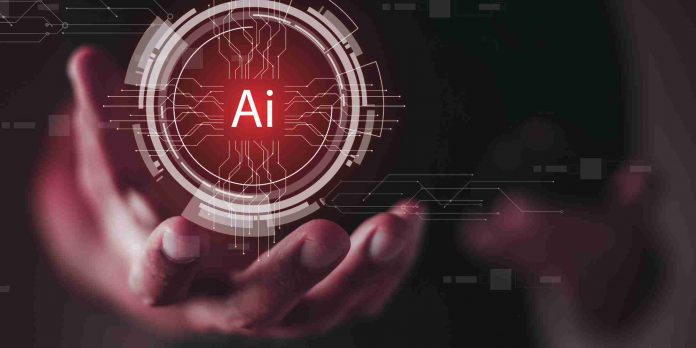The industry is discovering how the innovation can optimize every facet of the customer experience and back-of-house operations.
Restaurants are testing AI-enabled tools to enhance efficiency
Most quick-service restaurants rely heavily on recurring diners to drive business growth. Take Chick-fil-A, for example—92 percent of its customers visit on a monthly basis. Encouraging visitors to return over and over again requires innovative marketing strategies and high-quality data, which in the past was trickier and more time-consuming for marketers to track. Yet, AI adoption is spurring a metamorphosis across every industry, and quick-service is no exception.
With AI, hyper-personalization can be achieved at scale to foster loyalty with customers and quickly make a first-time visitor a devoted fan. About seven out of 10 restaurants use point of sale (POS) data for loyalty programs, upselling, and discounts. AI dives deep into diner preferences and order histories, so restaurants can design loyalty programs or promotions that resonate with their patrons, fostering brand loyalty and repeat business.
In fact, the entire industry is quickly learning how AI can optimize every facet of the customer experience and back-of-house operations.
AI holds promise across quick-service brand operations

In the quick-service world, restaurants are testing AI-enabled tools to enhance efficiency. Chipotle, for example, is testing an automated system for dispensing ingredients, and earlier this year, Wendy’s began its automated drive-thru pilot. These chains are infusing their operations with AI to mitigate the impacts of an ongoing labor shortage, part of a revolution in back-of-house operations.
More restaurants will likely be forced to implement technological solutions to counter labor trends. In the future, more quick-service restaurants will analyze sales trends and other operational data to help adjust staffing needs, ensuring optimal service during peak times even in difficult economic environments. Operations data can also inform balance-sheet projections that account for more dynamic shift schedules.
Training is expected to be another key area of AI’s focus. Data analysis can help restaurant operators emphasize team strengths and pinpoint areas that need improvement. POS system data will prove to be a veritable data goldmine for algorithms that will monitor inventory levels, track ingredient use, and predict item turnover to create a better purchase schedule for ingredients.
Personalization takes center stage
Optimized operations will help restaurants focus more on the customer experience, where some large brands are already experimenting. IHOP, for example, is embedding AI in its ordering experience to deliver more personalized menu recommendations.
As industry AI use proliferates, restaurants are likely to ramp up their use of intelligent tools to personalize experiences. From order management to customized menu suggestions based on data such as past orders, dietary preferences, or even the current weather, AI-driven analytics will help restaurants create more tailored experiences for their clients.
The ability to deliver data-driven experiences will prove especially powerful at the checkout counter (whether physical or digital). As mentioned earlier, the majority of restaurants use POS data for loyalty programs, upselling, and discounts.By diving deep into order histories and customer preferences, restaurants can design loyalty programs or promotions that resonate with their patrons, fostering brand loyalty and repeat business. And quick-service marketers are embracing it—in Movable Ink’s 2024 Audience of One survey, marketers are increasing their use of AI for consumer behavior analysis (59 percent), personalization (56 percent), campaign optimization (55 percent), and more.
Recommending add-on menu items that either compliment the diner’s current order and/or menu items that graduate customers to new menu categories can help grow check sizes and improve the customer lifetime value. AI-enabled tools can help quick-service restaurants better understand the level of discount each individual customer needs to convert and predict when an individual customer is expected to make their next order. Using this data as a rudder for personalized offers will not only streamline promotional strategies and strengthen bottom lines but enhance the customer experience.
AI-backed security systems will be needed to bolster operations
To protect their new investments, quick-service restaurants will use more and more AI-backed security. Detecting customer order anomalies can help thwart fraud or theft—quick-service restaurants registers are often testing grounds for stolen credit cards—and computer vision-enabled cameras can process video data to identify potential threats.
These use cases are sure to represent just a handful of ways quick-serve restaurants will bolster their operations with AI. As the technology improves and the labor and market landscape evolve, AI will help restaurants transform and develop long-term adaptive strategies to sustain growth.
From marketing to delivery: AI is the new backbone of the quick service industry
Although AI in the quick-service space isn’t anything new, the industry is starting to let AI steer marketing efforts and streamline engagement efforts. And AI use will not stop there. Quick-service restaurants will enhance both back-of-house operations and front-of-house customer experience with AI. The email marketing example more directly hints at what’s at the heart of any uptick in AI. Learning how customers engage with a brand and encouraging them down a path of discovery helps people find products they will enjoy time and again. Optimizing workflows will help quick-serve brands create the customer experience and earn the loyalty necessary to improve the bottom line.




